Recently, a crew from RNLI Rye Harbour was involved in a joint Multivac exercise with Van Oord, dredging and marine contractors working near to the mouth of the river Rother. The firm is working on the Lydd Ranges Sea Defence project using a trailing suction hopper dredger called Utrecht for the task in hand.
Van Oord approached the lifeboat operations manager (LOM) at RNLI Rye Harbour wanting to engage with the RNLI and set up an evacuation scenario so that if such a situation did occur in reality both parties would have worked through the procedure. This would, of course, be an extremely valuable exercise for both parties. The information given to those taking part was deliberately limited before the exercise so that it would be treated as a real situation and people would have to perform tasks under pressure.
Tim Dickinson, lifeboat helm on the day, summed up the experience: “We weren’t given much information in advance but three trainees and myself were tasked to the Utrecht, a dredger from Amsterdam, for a Cas-care exercise. It’s not often that we get to train with a vessel as large as this (approximately 150 meters in length) so it was quite an experience.
“Once we had tied up alongside we climbed the rope ladder, not an easy task, to board the vessel and were led to the pump room which was down several flights of steep stairs. This would later pose a challenge when it came to getting the casualties out to the deck.
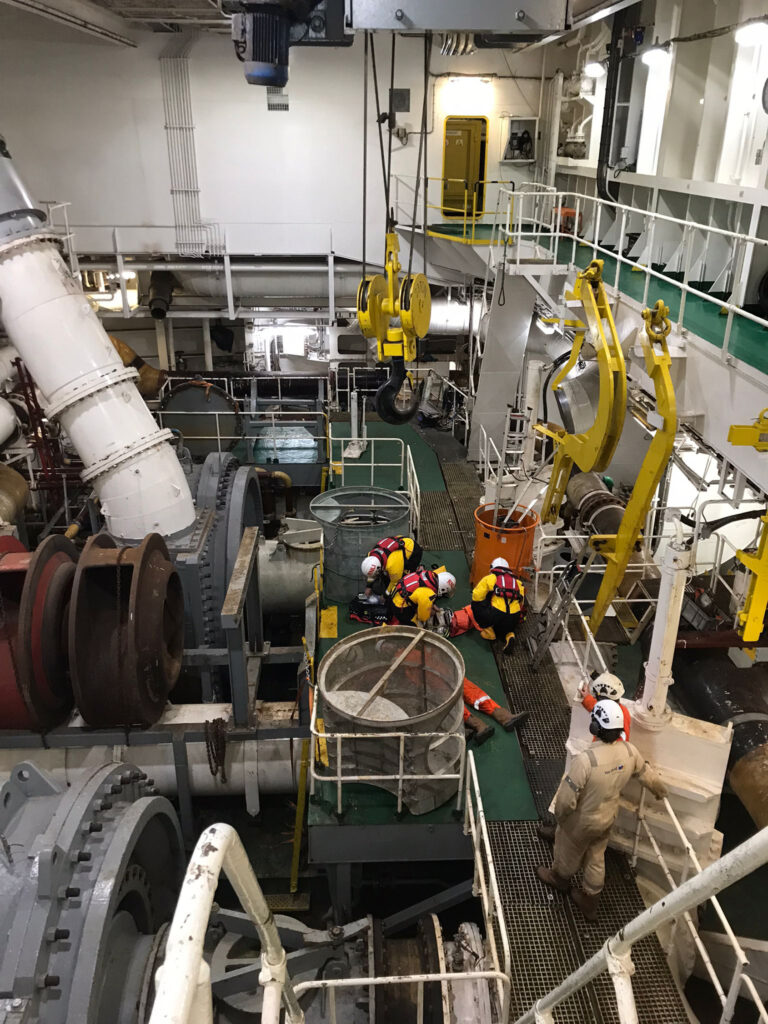
“We discovered that we had two casualties, one of whom was trapped under a large section of pipe. The trainees split up and set about treating them. Once they had assessed and stabilised them as much as possible, the pipe was lifted off the casualty using the ship’s winch. As their condition would have been so serious, a helicopter evacuation would have been the only option but we had to get them out on deck. Once on our stretcher, we proceeded to navigate the narrow walkways and ladders to get them outside where the exercise ended for us.
“This was a very challenging scenario to take part in as the conditions were particularly difficult. The noise meant that communication was very limited, and there were the heat and confined spaces to contend with, too. Overall the crew did really well, and I think we all learnt a lot. It was possibly one of the best exercises I’ve been lucky enough to take part in.”
Project manager, Gerald Alkema, for Van Oord, said: “We were very grateful we were able to perform the joint exercise with the RNLI to check and test the offshore emergency procedures. The drill was a very worthwhile exercise for all involved. We were very happy to make a donation of £1,000 to RNLI Rye Harbour to help with further training.”
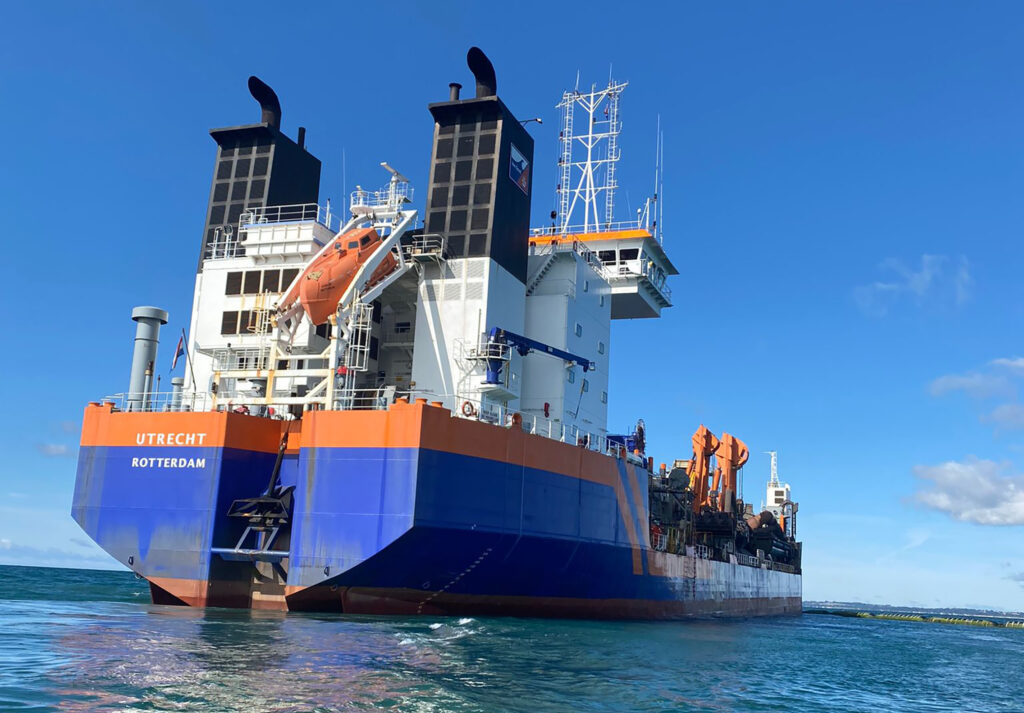
Emma Stonham, trainee boat crew, commented: “It was a brilliant experience. I felt we all did really well, especially as three of us are still in training, Tim D (Helm) was brilliant. We were given a brief description of what we were going to: I think that in real life you’d just get on with it and there would be no time to worry. When we got to the vessel we had to climb a rope ladder and once on board we made our way to the engine room which was loud, making communication with the team difficult – and it was extremely hot. I did my Cas-care training last year and using the cards helped bring back the knowledge of the course. By staying calm and working together we were able successfully to extract the casualty. It was a fantastic exercise to be involved in!”
Image Credits: Kt bruce , Emma Stonham , Tim Dickinson , Emma Stonham , Van Oord .



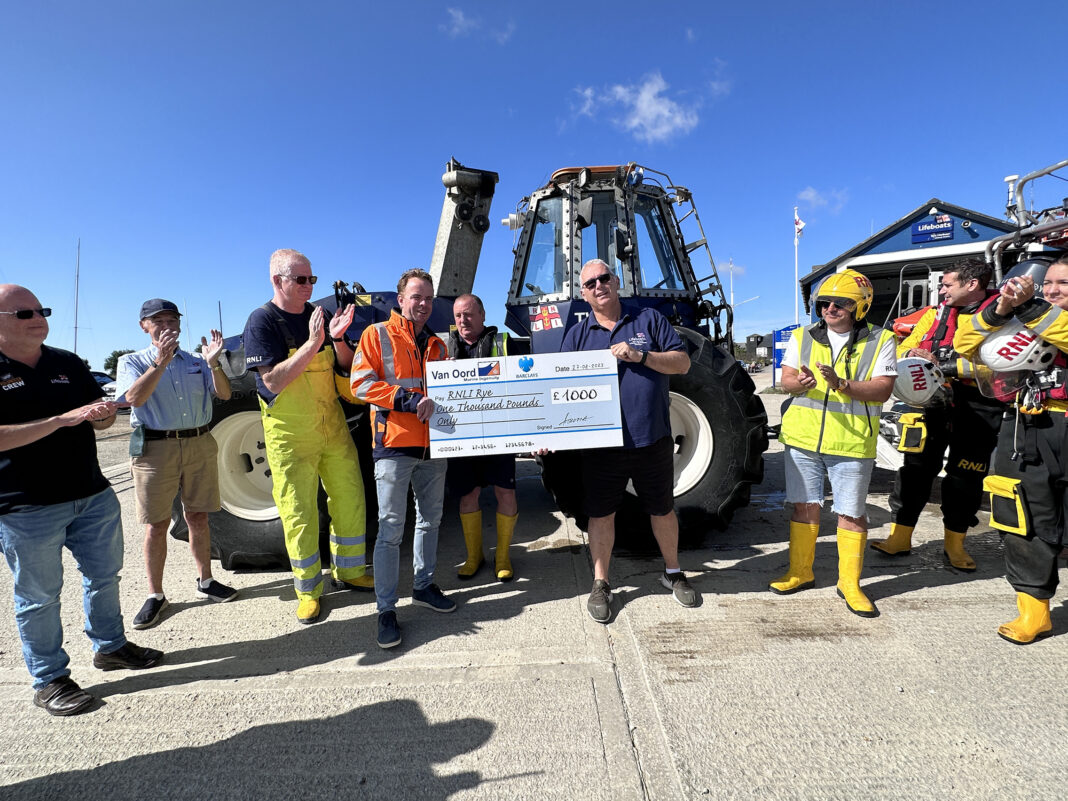
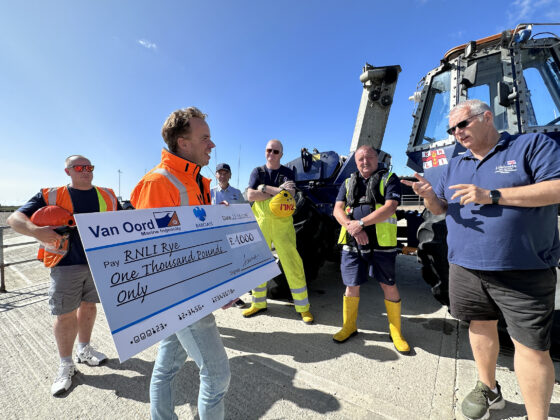
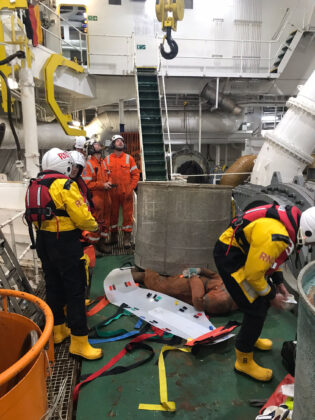
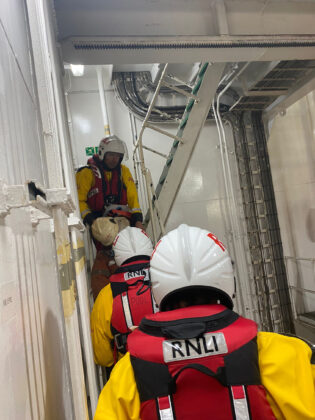
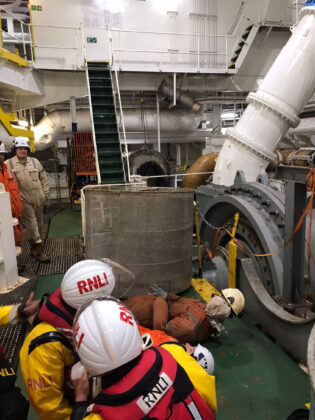
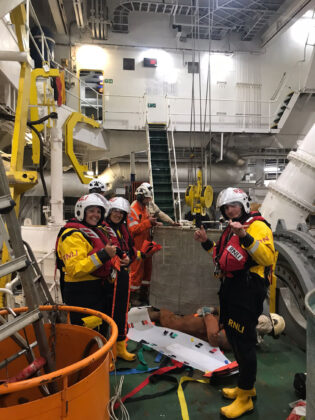
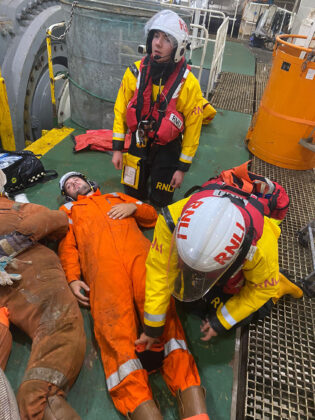
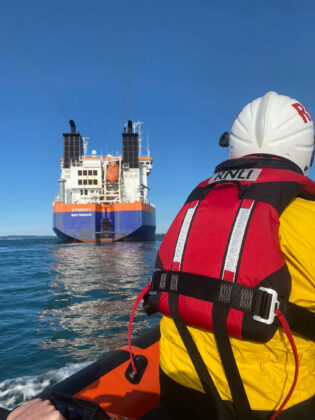
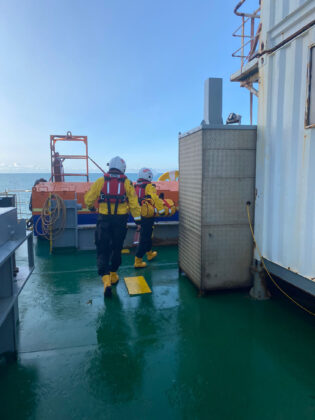
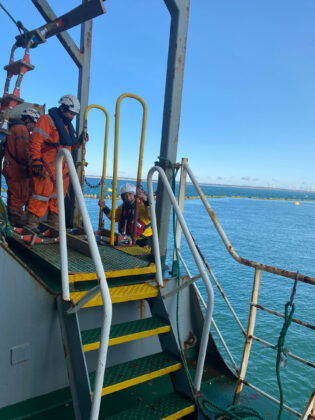
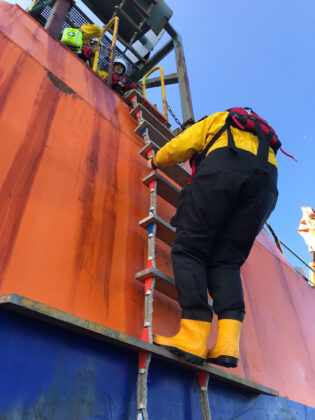
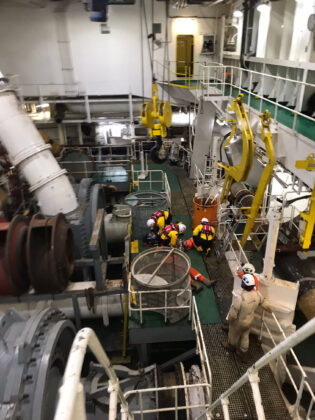
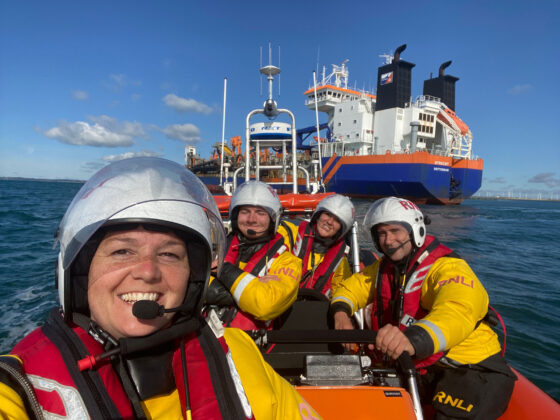
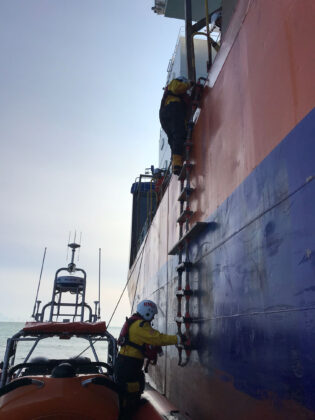
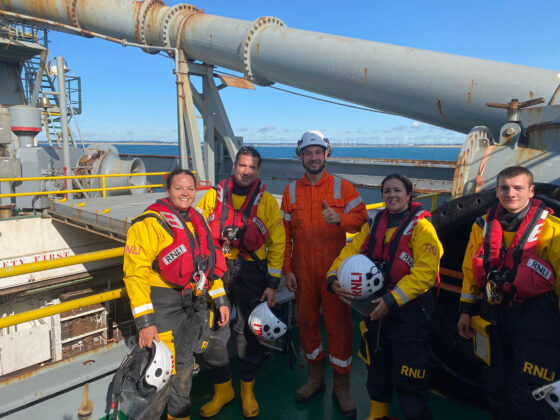
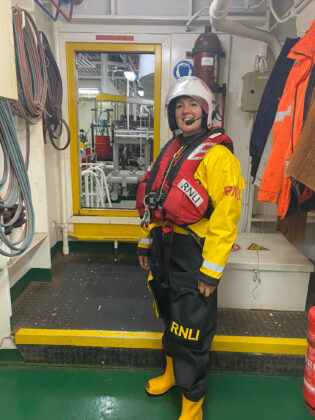
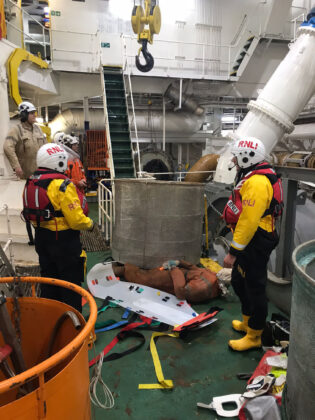
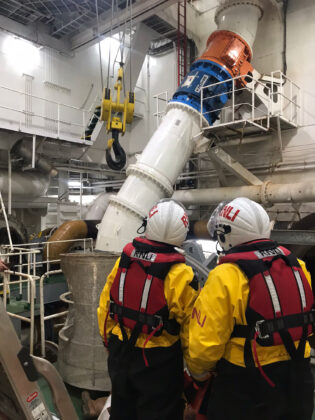
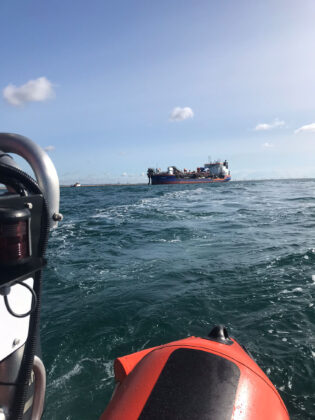
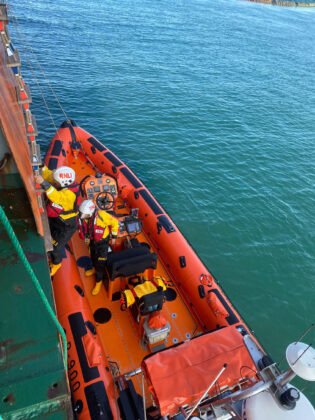
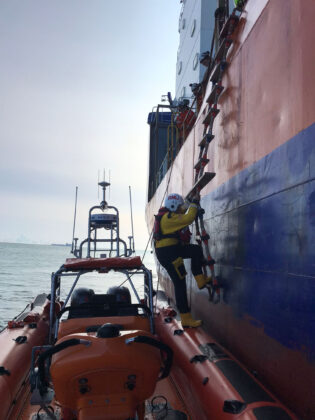
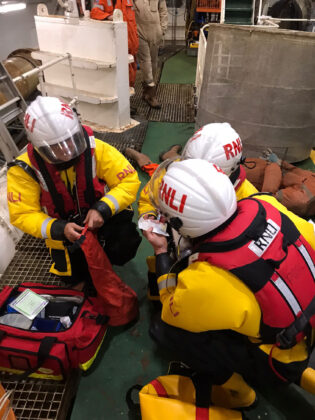
Thanks for the article. However, I’d welcome more information about how dredger Van Oord is contributing to the Lydd Ranges Sea Defence project. For example, what quantity and what kind of seabed material is being dredged and where is it being dredged from? What is the impact on our local seabed ecology? Another point to make is that the RNLI is a charity while many people feel that the government should be responsible for lifesaving in our coastal waters. Where larger vessels such as ‘Utrecht’ are concerned, their first contact for rescue services should presumably be the Maritime and Coastguard Agency (MCA), not the RNLI — which is more suited to smaller craft incidents, swimmers in trouble and the like. As someone with a maritime background myself and a supporter of the RNLI, I’m not saying the RNLI doesn’t play a role, but it shouldn’t be viewed the primary responder for large merchant vessels with casualties on board. In moderate to severe sea conditions, the only option for evacuating a casualty would be by Coastguard helicopter. Only in calm seas could an incapacitated casualty be safely lowered down the steep side of a commercial vessel to a small RNLI rib or lifeboat. The photos show that the sea on the day of the training was a millpond. Modern containerships, bulk carriers, ro-ros, etc, are extremely high-sided, unlike the dredger. It would be useful if the MCA and RNLI could clarify when, where, for what vessels and in what circumstances they will attend emergency situations for large merchant ships. In my view, the MCA is the first port of call, with the RNLI a back-up in very limited circumstances.
My concern is the ecological impact to the sea bed in Rye Bay by these works. No doubt there has been an ecological impact survey prior to the works taking place, but who else was consulted? Is this an Environmental Agency project or MOD?
Gavin, All maritime emergencies in UK waters are delt with by the Coastguards(HMCG), if you dialled 999 and asked for the RNLI you would automatically be put through to the HMCG.
The RNLI are a declared facility who are called upon in an emergency by the HMGC, although in some instances they can self launch if they become aware of an emergency but even then they still come under the control of HMCG.
As you say an evacuation of a casualty from a big ship ideally would be done by helicopter but there are rare occasions when one isn’t available or in some cases due to distances involved and time critical injuries a lifeboat crew can be the first on scene.
I know the helicopter for this area is ten minutes flying time away but could be anything up to an hour away, for instance if the Lydd helicopter is busy one might be tasked from Solent.
So it makes sense for the RNLI to train for all likely or unlikely scenarios.
As for the government funding the RNLI, no thanks, that would be a disaster, governments are notorious for spending cuts etc
If it ain’t broke then why fix it?